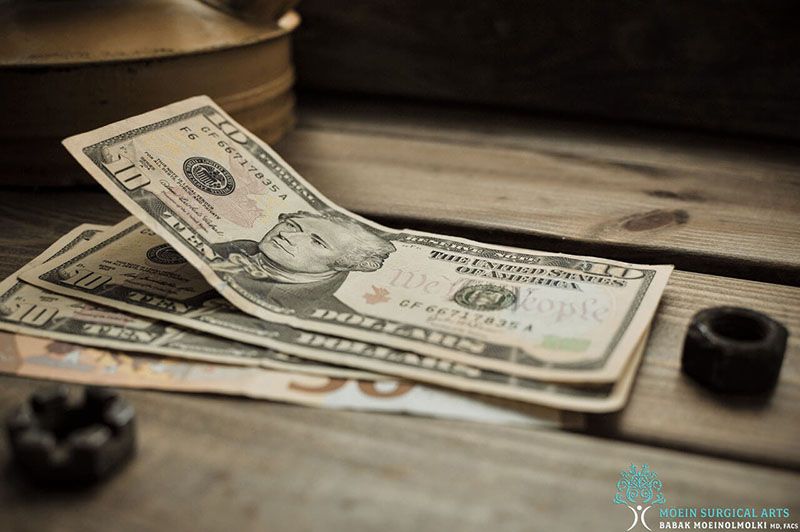Introduction: 7 Gyno Types and Male Breast Reduction Options
Gynecomastia or “Man Boobs” is a common condition that affects 65% of all men and 50% to 60% of all young boys. The condition can occur during infancy and puberty in normally developing boys. It is characterized by the enlargement of the glandular tissue of the male breast.
While gynecomastia (or gyno) doesn’t cause pain in the majority of men who experience the condition, it can hurt their pride. The causes are myriad and varied. Gyno can be the result of:
- High levels of estrogen during puberty
- Anabolic steroid use
- Herbal supplements like tea tree oil and lavender
- Opioid abuse
- Estrogen found in soy products
- Heartburn drugs
- Anti-anxiety medication
Gynecomastia also has links with some medical conditions and treatments such as:
- Chronic kidney failure
- Hyperthyroidism
- Low testosterone levels
- Cirrhosis of the liver
- Aging & obesity
If you suffer from excessive growth of male breast tissue, you’re definitely not alone. The good news is that there are treatments for this condition. In order to find the right treatment, it’s important to discover which type of gynecomastia you suffer from. Only a medical doctor or gynecomastia surgeon can make an accurate diagnosis. There are seven types of gyno. Knowing which type you have is the first step to finding the most accurate treatment.
7 Types of Gyno – Which Kind Do You Have?

Normal: You might experience normal gynecomastia if you are an adolescent male 12 to 15 years of age or an older man over the age of 65. In many cases, the condition will resolve on its own within one or two years.
Adult: This is the most common form of gynecomastia. The condition is characterized by the presence of fat deposits in the glandular tissue. Doctors may recommend surgery upon diagnosis.
Glandular: Pure glandular gynecomastia is commonly visible in bodybuilders who have abused steroids. The only treatment for this type of gyno is surgical removal of the gland.
Adolescent: Experts believe that adolescent gynecomastia is hereditary. The condition tends to appear in 30% to 60% of boys between the ages of 9 and 14. In many cases, the gyno will resolve on its own without intervention as the boy grows into adulthood. Surgery is an option if the gynecomastia persists after the boy turns 18. In severe cases, surgeons can remove the excess tissue before the boy reaches adulthood, but only upon the recommendation of a physician and child development specialist.
Asymmetric: Otherwise referred to as unilateral gynecomastia, this condition is present on only one breast or on both breasts at varying degrees. You can usually self-diagnose this type of gyno when one breast appears larger than the other. The most common treatment for asymmetric gynecomastia is surgery.
Severe: Saggy skin and severely enlarged breasts cause this type of gyno. Men who are overweight or obese and older men with diminished skin elasticity most often experience this type of gynecomastia. Surgery is the most recommended form of treatment.
Pseudo: Instead of glandular tissue, pseudo gyno is caused by adipose tissue only. In most cases, the condition can be treated by watching one’s diet. Some doctors may recommend surgery.
Treatments for All Types of Gynecomastia

Once you have been diagnosed with excessive male breast growth, the next stage is to discuss treatment options. There are three types of surgical options to treat gynecomastia. Your doctor will recommend the one that is best suited to your specific case.
Liposuction (Male Breast Reduction)
Traditional liposuction is recommended for cases of gyno where male breast growth is caused by excessive fatty tissue. During the procedure, your gynecomastia surgeon will insert a thin hollow tube, known as a cannula, through tiny incisions. The cannula is moved back and forth to break up and loosen the fat before it is removed by way of vacuum suction.
Excision
When excess skin and glandular breast tissue are the cause of gyno, your surgeon will use excision. This is the process of cutting away the glandular breast tissue. The areola or nipple will also be reduced or repositioned for more natural-looking results. The incision patterns used will depend on your specific condition.
Liposuction & Excision
When both glandular and fatty tissue are to blame for your gynecomastia, your gyno surgeon may combine the procedures. Lipo and excision can also create a natural appearance, even in cases of severe male breast growth.
What Do Gyno Surgery Results Look Like?
Your results will be immediately apparent upon waking up from surgery. There may be some swelling in the chest area, but this can be managed by wearing a chest compression garment. This constricting vest also helps with blood circulation, which aids in proper healing. In some cases, your surgeon will place tubes under the skin to drain fluid and any blood that may collect at the treatment site. Your results will be permanent, in most cases. You can ensure you retain the longest-lasting results by keeping your weight stabilized. In rare cases, the gynecomastia returns, which requires follow-up treatment.
You should be able to return to work after 7 to 10 days. Most men are also able to go back to the gym after two weeks for cardio and weight lifting after four weeks, barring complications from surgery.
How Much Does Gynecomastia Surgery Cost?

The fees associated with gynecomastia treatment can vary depending on the specifics of your case. The fees can also include the liposuction or excision treatment, operating room facilities, surgeon’s fees, anesthesia fees, medical tests, post-surgery garments, and prescription costs. Gynecomastia surgery is not typically covered by medical insurance, as it is not considered a medical necessity, however, financing is usually available at most gynecomastia surgery centers.
Are There Any Risks to Gyno Surgery?
Gynecomastia surgery, whether it involves liposuction or excision, is a major surgery, and all surgeries come with risks. The most common risks associated with gyno surgical correction include blood clots, hematoma, risks associated with anesthesia, breast contour irregularities, infection, scarring, fluid accumulation, and temporary or permanent changes in breast or nipple sensation.
Making the decision to have gynecomastia surgery is a major one and should be made with careful consideration. If you have concerns, discuss them with a qualified gynecomastia surgeon, such as Dr. Babak Moein of Moein Surgical Arts. Dr. Moein is an expert in treating your gynecomastia problem, no matter which type you are experiencing. In nearly every case, patients who undergo gyno surgery have a newfound confidence and a renewed zest for life.
Ready to Schedule a Consultation for Male Breast Removal?
When you are ready to discuss male breast reduction surgery, call Moein Surgical Arts in Los Angeles, California. Dr. Moein also serves patients throughout the Encino and Glendale areas. He is ready to meet with you during your private consultation –
Click Here for More Videos about Gyno Surgery
